All About Curb Plants

Plants for borders allow you to add beauty to the local area, as well as emphasize a certain shape. Quite often, they are planted on paths, flower beds, lawns, flower beds and other various garden elements. To create a beautiful pattern, it is necessary to correctly select the border plants.
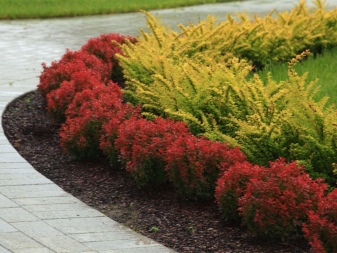
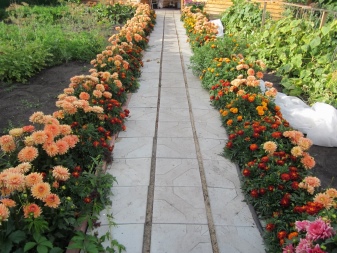

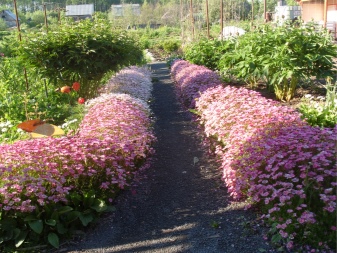
Peculiarities
Quite often, you want to emphasize the shape of a flower bed or lawn in the garden. If it is necessary to choose border plants, they pay attention first of all to low species, since they will not hide greenery, various garden elements. These plants are characterized by compactness, and they also thicken excellently. In this case, the borders will look impressive, highlighting both regular and unusual geometric shapes.
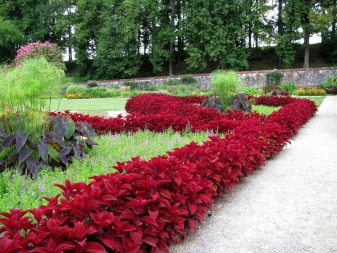

Today, a wide range of border plant species is on sale, so everyone can choose the best option for decorating their garden, taking into account a certain style. To decorate the surrounding area, low-growing annuals and ground cover biennial plants, perennials and shrubs, as well as grass are used.
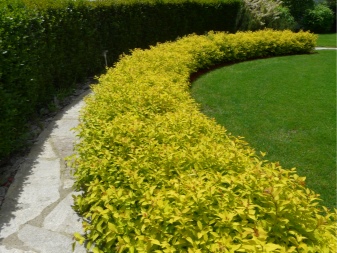
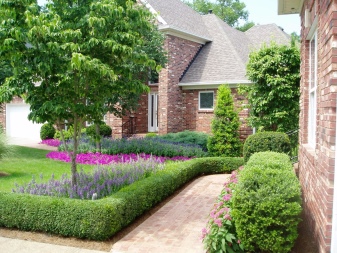
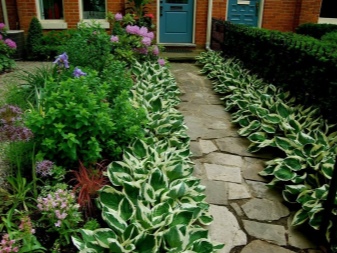
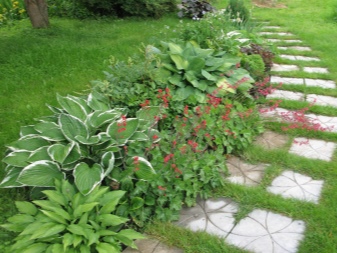
If children, especially toddlers, have access to plants, then it is better to plant such an area with plants that are resistant to any kind of damage, as well as the well-known trampling. Such options are often used in playgrounds or along paths.
Curb plants can be planted for a variety of purposes, but most are done to mark a specific line, such as along paths, around flower beds, and other similar objects. Experts recommend giving preference to crops with a long flowering period. Quite often, stunted flowers are chosen that have the ability to bloom all summer. They are often planted in balcony boxes.
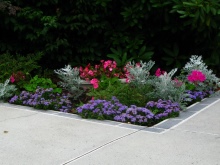
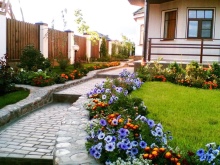
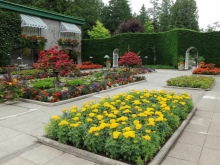
One-, biennial, and perennials can be used to create stunning borders. Do not forget the main rule - only closely planted plants look attractive. Planting flowers tightly is essential to create a uniform look and to avoid tearing if wilted plants appear. The fence should have clear boundaries even from a distance.
When choosing curb plants, you should take into account the type of soil, its position and reaction. And do not forget that these plants must harmoniously fit into the overall design of the garden.
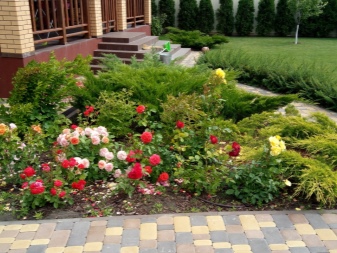
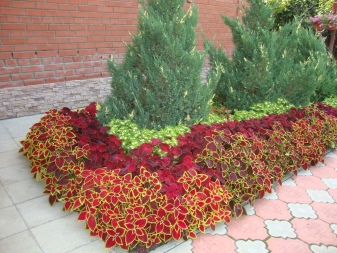

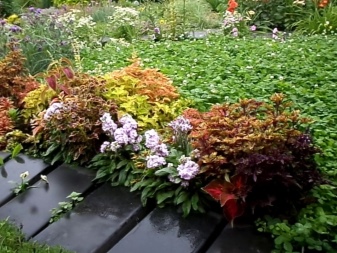
Popular Plants
Today, a wide range of border plants is on sale, among which you can choose one - or perennial flowers, various types of grass and undersized shrubs. Let's take a closer look at the most famous varieties.
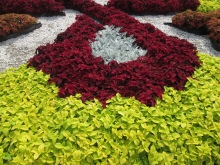
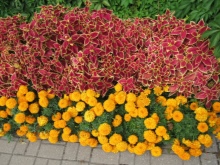
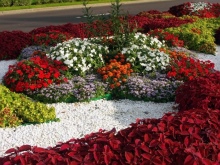
Flowers
To create a border, low varieties are often used, which grow for only one year. With such colors, you can constantly create original compositions, experiment with various landscape solutions.
Every year it will be necessary to make a new planting of ornamental plants.
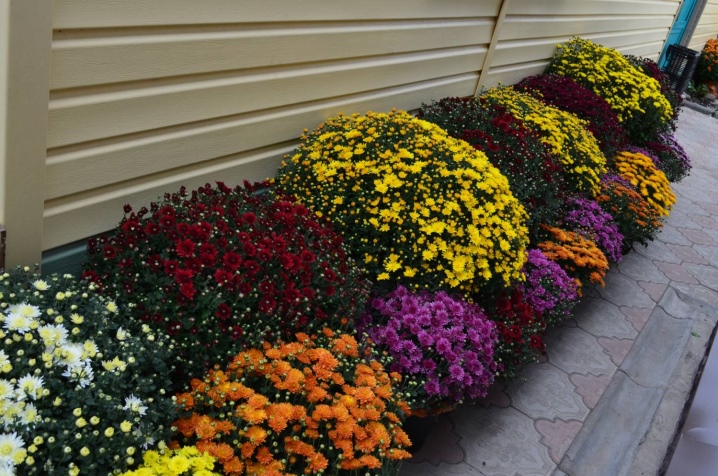
You can pay attention to the most popular varieties of annual flowers.
- Petunia Is an amazing flower that will become a bright decoration of any flower bed. Petunia is quite bright and showy. The plant needs regular watering and prefers to grow in a sunny location. Petunia can be planted directly into the soil or start with seedlings first. Unusual varieties of petunias are planted only through seedlings.

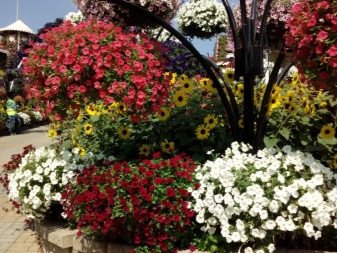
- Marigolds (black shaves). This species is characterized by ease of cultivation, as well as rather long flowering (from early June to October). Marigolds are presented in several colors: red, orange and yellow species. To make a curb, you will need low grades that do not exceed 30 cm in height. It is worth noting the intense aroma of flowers, which may not please everyone. Quite often they are chosen for planting on the outskirts of a rabatka or under a fence.
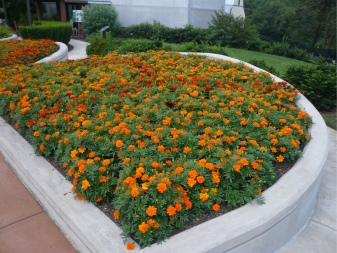
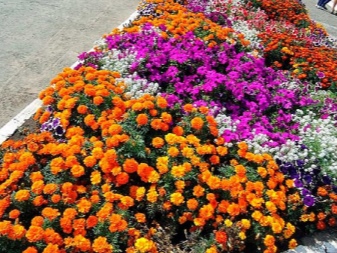
- Pansies (Viola wittrockiana). These flowers adorn the borders in early spring. They have a long flowering period (March to October). Experts advise planting only one variety of the same color, which usually includes several tones at once. The flower is quite hardy, as it can withstand even trampling. The plant needs moderate and systematic watering, likes well-lit places.
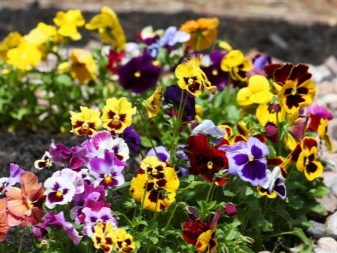
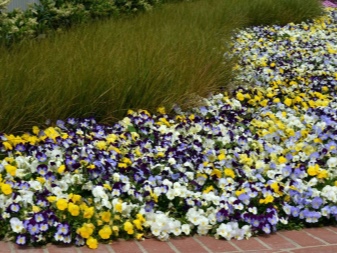
- Daisies (Bellis annua). These plants usually grow small, from 4 to 20 cm, so they are regularly used to decorate living fences. Basket-shaped inflorescences usually have a white-yellow or pink tint. Daisies bloom from early spring to mid-summer. They are not capricious and very effective.
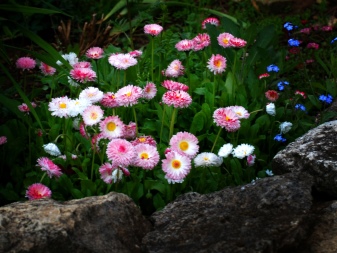
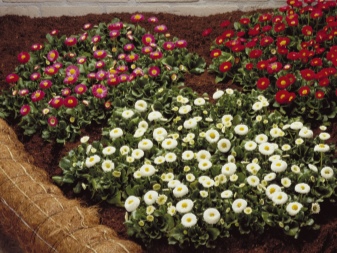
Perennial flowers are also in high demand. Consider the brightest solutions for creating a flower fence.
Campanula (bell)
If you want to decorate a snow-white perennial border, pay attention to the campanula. It will allow you to create a delicate and sophisticated corner. White bells are usually planted in pots, and then they are placed in the necessary places. This flower requires constant watering, the ground should not become dry.
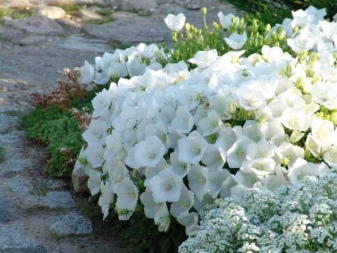
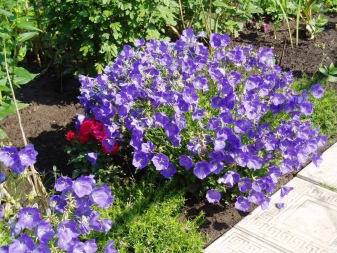
Chrysanthemum
This culture should be attributed to the late flowers. It is represented by a wide variety of species (more than 160 varieties), among which there are both one- and perennial. Small and undersized varieties are used to form curbs. They are known for increased winter hardiness, a variety of both colors and shapes, and can bloom for a long period. Early, medium and late varieties are on sale.
If you choose them correctly and plant them on your site, then it will always be in bloom, because the flowers of one variety will be replaced by the flowering of another - and so on.
Chrysanthemums grow splendidly in lighted places. After 2-3 years, they already need a transplant. It is worth carefully applying fertilizers, because with an excess of them, the plant grows green mass. Chrysanthemum should be covered for the winter.

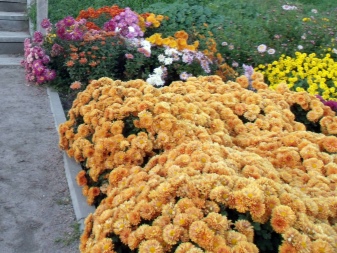
Roses
These flowers are often used to create layered borders. The Debut rose variety has a small height, only 38 cm. It has double flowers of a dark red hue, which adorn the garden from June to September. The bushes should be planted at a distance of about 20 cm from each other, and only cuttings are used for propagation. For the winter everything roses must be covered with spruce branches and a film frame.
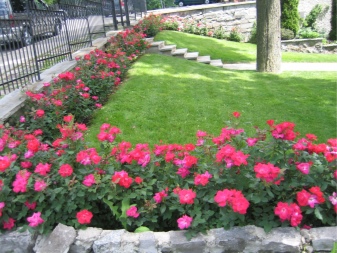
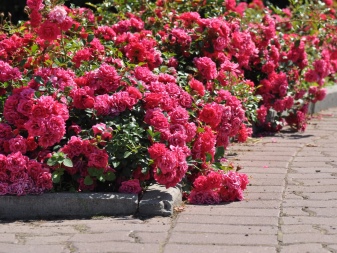
Tulips
These bulbous flowers are also used to create borders. Dwarf tulips are also called crooked or low. The plant is only 10-12 centimeters tall. If you are attracted to blue flowers, then look at Alba Coerulea Oculata, which has a dark blue center.
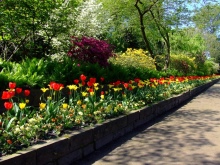

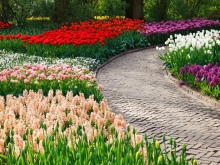
Irises
For the formation of live borders, dwarf bearded irises are suitable.
They are not very common in our area, but they are great for decorating a garden. Irises are not capricious, they begin to bloom quite early and abundantly.
Foliage will decorate the territory until late autumn. They can be used to create multi-level borders.
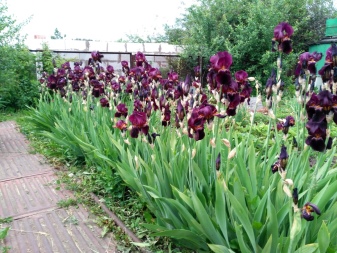

Daffodils (Narcissus)
This flower is often used for outlining bulbous plants. The size of the plant varies from 20 to 40 cm. The flowers can be orange, yellow or white. Usually, daffodils bloom from mid to late spring, so they are classified as spring plants.

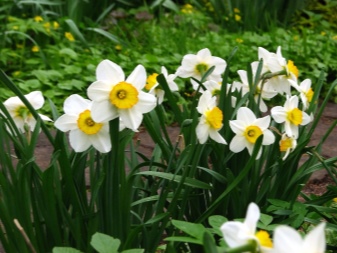
Shrubs
Shrubs deserve special attention. They are durable and look very impressive. Consider the known options for shrubs for the formation of living fences.
- Host (function). Low varieties of this shrub will be an excellent solution for flower beds or borders, they can be used for tree fences. They grow well in shady areas.
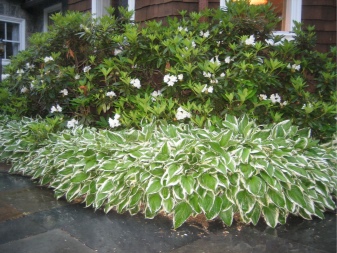
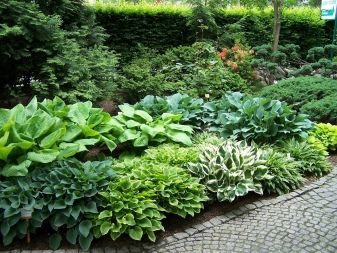
- Prominent sedum (Sedum Spectabile). It is also called ice bush. Its height is about 40 cm. Thick shoots are formed on it, having leaves with serrated edges and pink flowers that appear in early August.
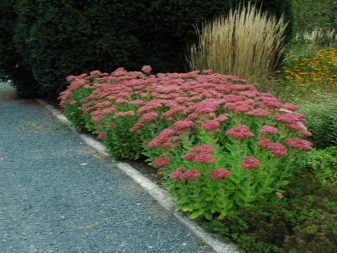
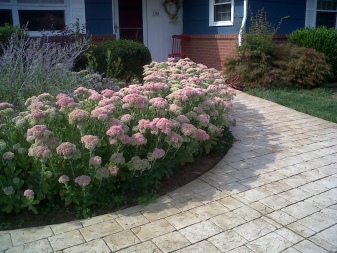
- Lavender (Lavandula). This is the optimal solution for the embodiment of the Provence style in the garden landscape design. Lavender is often used to form flower fences along paths. It has an amazing aroma and attractive appearance. It blooms only in the second and third months of summer with violet and lilac flowers. Usually its height does not exceed 60 cm. It is worth noting that there are varieties that tolerate frost well. This shrub grows well in sunny places, but needs protection from the winds.
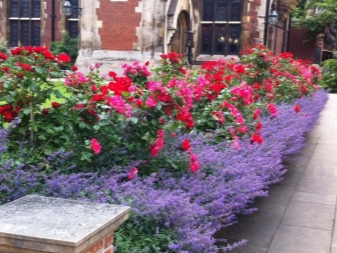
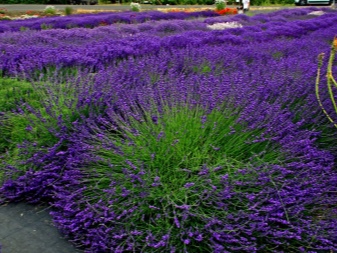
- Small-flowered Heuchera (Heuchera micrantha). It is suitable for forming fairly tall decorations. This evergreen plant has dark purple and green leaves. It blooms in the second and third summer months. Paniculate inflorescences contain cream and pinkish flowers.
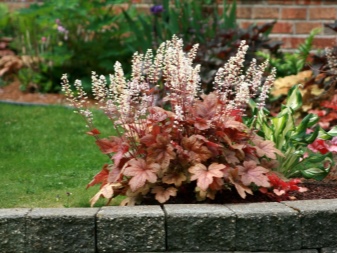
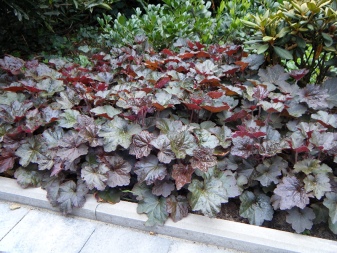
- Cirrus carnation. This variant is usually no more than 30 cm in height. It has narrow blue-green leaves that form small bunches. The plant has feathery white or pinkish flowers. It decorates the garden from late spring to mid-summer. The pinnate carnation grows well on dry soils.

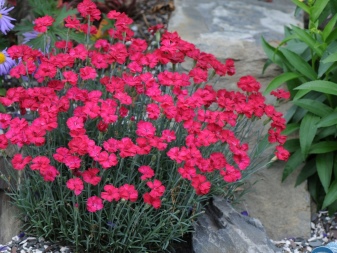
Grass
Grass is often used to form borders, which gives originality and uniqueness to the design of the local area. Among the most common herbs, the following types should be noted:
- hakonechloa;
- impera;
- pinnacle (foxtail);
- sedge (evergreen and common);
- gray fescue;
- ophiopogon (flat-shot).
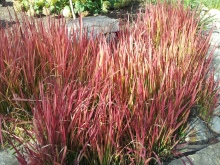
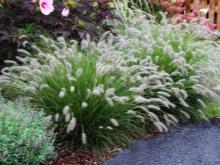
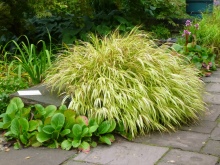
Rules for creating compositions
When decorating landscape compositions from border plants, you should adhere to simple recommendations. For the first time, flower edging in her garden was used by Gertrude Jekyll, who was a landscape designer by training. And today many admire her work.
Gertrude Jekyll recommends that you first familiarize yourself with the names of the representatives of the plant world, look at the already designed works on the Internet, and only then start experimenting, creating your own unique composition.
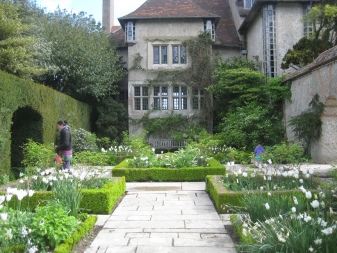
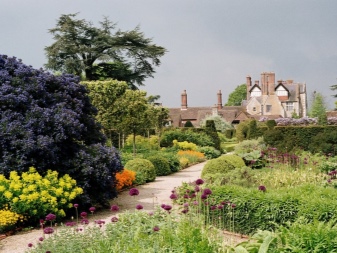
To make a beautiful picture come true, several recommendations must be taken into account.
- Flowers when forming a hedge should be of a different color than the color of the flower garden itself, while it is better to choose contrasting tones.
- It should be borne in mind that each culture grows both upward and in breadth, so initially you should leave enough space for it.
- The presence of large gaps in the flower border will make it look messy. It is better to use plants of the same type, while planting them in two rows at once.
- It is necessary to adhere to certain dimensions when forming curbs, for example, along a path. Classic parameters - the height should not exceed 40 cm, and the width - 50 cm.
- When choosing plants from among a wide variety, it is recommended to give preference to those that grow heap and for a long time.
- If we consider undersized perennials, then their appearance quite often changes depending on the weather. You need to choose those flowers that look great both in the heat and during the rains.An excellent solution will be unpretentious varieties that are characterized by excellent endurance.
- Shape-shaped perennial fences look amazing, but this kind of design can only be created by a professional. Beginners are better off starting with simple shapes.
- If perennial plants are used to create a certain pattern, then the period of their flowering must be taken into account. They should bloom at the same time - only then it will turn out to embody the conceived drawing into reality.
- If you want to create an unusual decoration in the form of a hedge for your summer cottage, then you need to start by drawing up a plan. Take paper and pencils of different colors, draw how you see the future composition. At the same time, highlight that undersized plants will be planted in the foreground, and so on. Thus, you can clearly see how plants of various types and colors will be combined with each other.
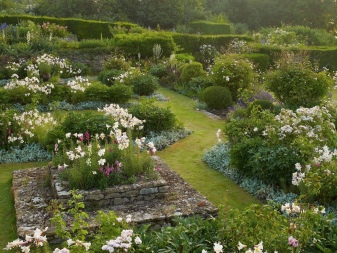
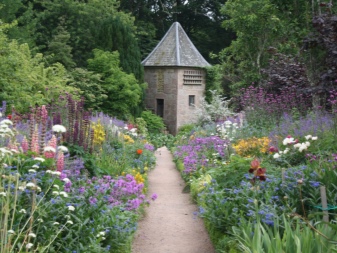
Today, landscape designers are capable of a lot. They can even create a green shrub border that looks beautiful, has a long flowering period, and is great to trim.
But novice specialists in this field should not tackle shrubs - experiments will not be crowned with success, because certain experience is needed. It is easier, of course, to work with undersized flowers.
Most landscape designers advise using exclusively low-growing flowers, because their size will allow you not to cover the beauty of the entire garden. Usually their height is 25 cm.
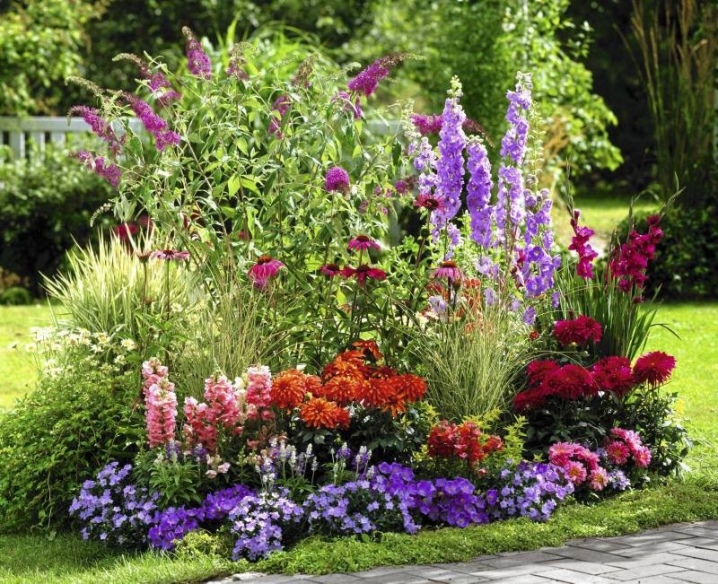
Care Tips
Low-growing perennial plants do not need special care. It is worth adhering to the following recommendations:
- in the spring it is necessary to prune dried shoots;
- soil preparation should be carried out - soil fertility and the absence of weeds have a positive effect on the development of plants;
- in summer, flowers need to be watered, weed and thinned out;
- in the fall, when the plants begin to wilt, it is imperative to apply fertilizer;
- if the flower bed is located in the sun, then heat-loving plants should be planted, if in shady areas - shade-loving specimens;
- you need to monitor the design of the border - if empty spaces appear, you need to fill them, plant flowers, shrubs;
- it is impossible to recommend color solutions for plant borders, since everyone has their own vision and at the same time prefers certain color versions - someone likes a combination of several flowers of different shades, while others try to adhere to uniformity, while using no more than two varieties.
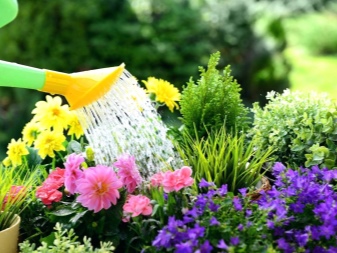
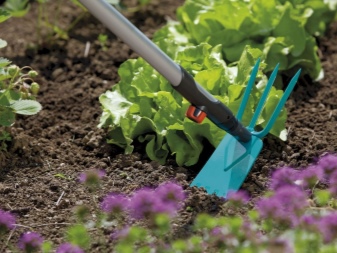
Beautiful examples
We hope that the following ideas for decorating garden areas with the help of curb plants will help you create your own unique and inimitable option.
- Lavender looks very impressive and also attracts attention with its amazing scent. It is perfect for decorating tracks.
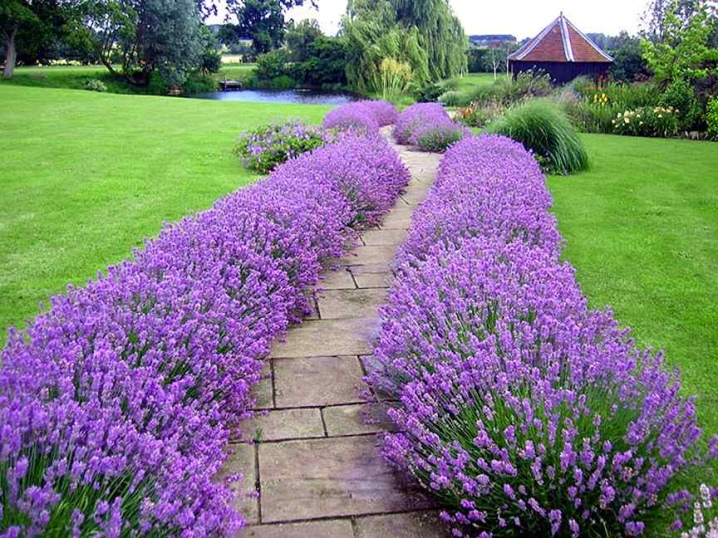
- The bright red curb rose will be the highlight of any garden. It allows you to create a fairly tall living fence.
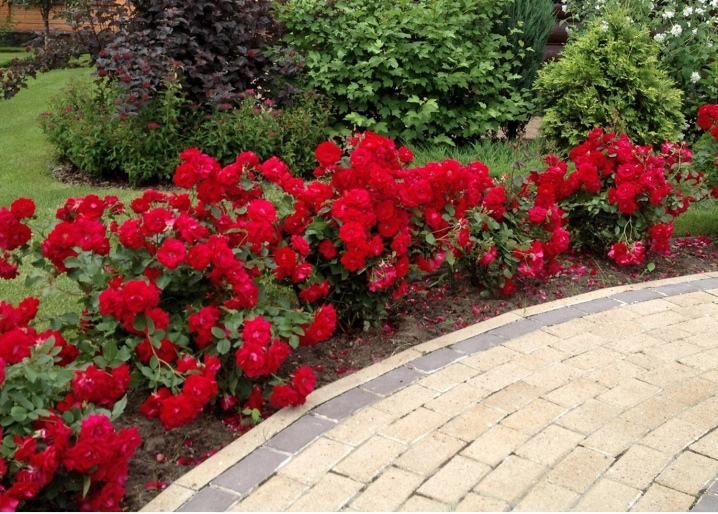
- Perennial phloxes form a rather stylish "carpet". They have small purple flowers and look great in tandem with stone paths.
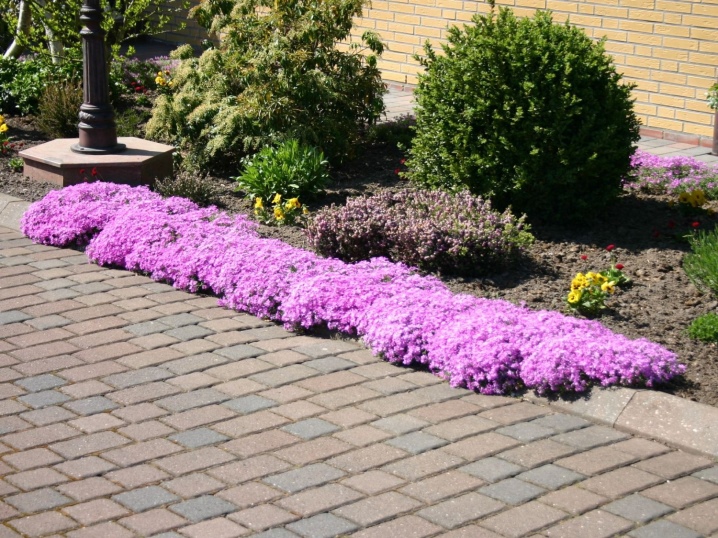
- A garden with flowering plants of various colors and shades will not leave anyone indifferent. To make a real work of garden art, you should first think over which flowers will be used, and also take into account the period of their flowering.
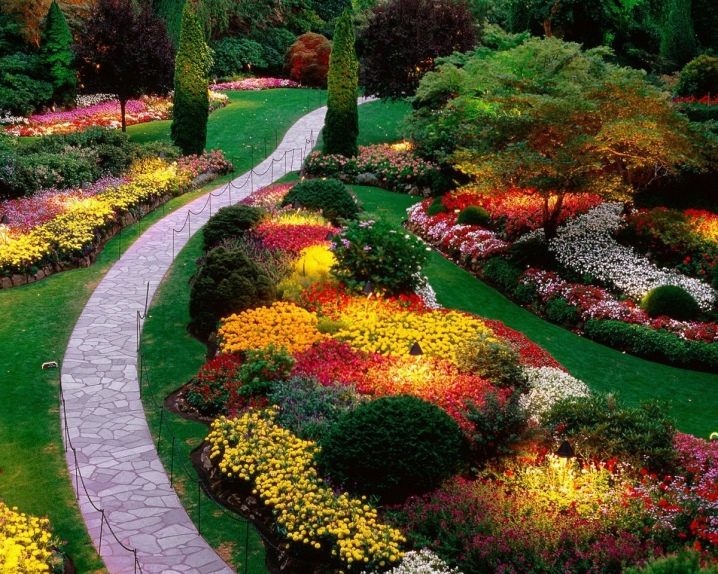
- Petunias look great when paired with bulbous flowers. Such an ensemble looks amazing in the spring.
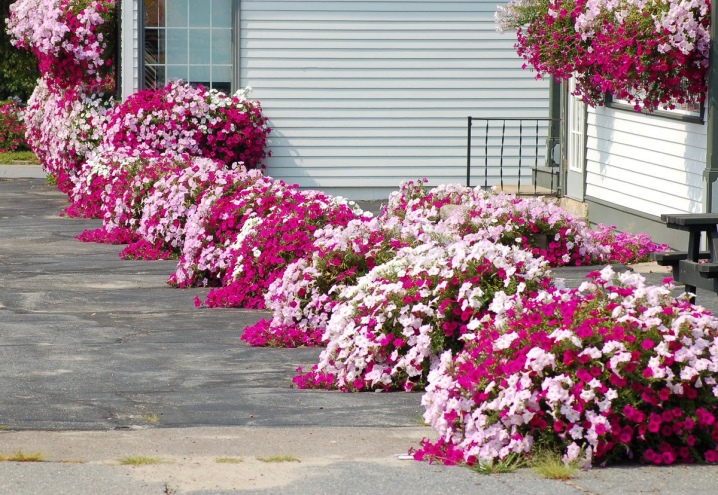
For curb plants, see below.



































































The comment was sent successfully.